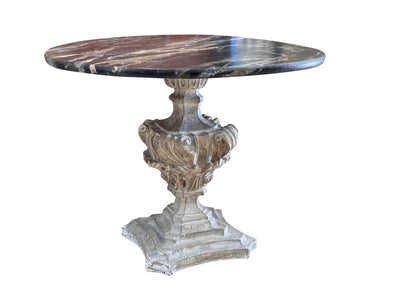
Restoring the beauty of an antique wood table is a rewarding process that can bring new life to a piece of furniture that has seen better days. Whether you have a family heirloom that has been passed down through generations or you've found a hidden gem at a thrift store or estate sale, refurbishing an antique wood table can be a fun and creative project. With the right tools, materials, and techniques, you can transform a worn and weathered table into a stunning centerpiece for your home.
The first step in refurbishing an antique wood table is to assess the condition of the piece. Take a close look at the surface of the table to determine the extent of any damage, such as scratches, stains, or water marks. If the table has a finish that is chipped or peeling, you may need to strip it down to the bare wood before proceeding with any other steps. You can use a chemical paint stripper or sandpaper to remove the old finish, being careful to work in a well-ventilated area and wear protective gear.
Once the old finish has been removed, you can begin the process of sanding the table to smooth out any rough areas and prepare the surface for a new finish. Start with a coarse-grit sandpaper to remove any remaining finish or imperfections, then gradually move to finer grits to achieve a smooth and even surface. Be sure to sand in the direction of the wood grain to avoid causing any damage to the table's surface.
After sanding, wipe down the table with a damp cloth to remove any dust or debris before applying a wood conditioner. Wood conditioner helps to prepare the wood for staining by promoting even absorption of the stain and preventing blotchiness. Apply the wood conditioner according to the manufacturer's instructions and allow it to dry completely before moving on to the next step.
Once the wood conditioner has dried, you can begin the process of staining the table to achieve the desired color and finish. Choose a stain that complements the wood species and style of the table, and apply it evenly with a brush or cloth. Be sure to work in small sections and wipe off any excess stain to prevent drips or uneven coloration. Allow the stain to dry completely before applying a second coat if desired.
After the stain has dried, you can protect the finish of the table by applying a clear coat of polyurethane or lacquer. Polyurethane provides a durable and water-resistant finish that will help to protect the table from everyday wear and tear. Apply the clear coat in thin, even layers, allowing each coat to dry before applying the next. Be sure to sand between coats with fine-grit sandpaper to achieve a smooth and glossy finish.
Once the final coat of clear finish has dried, you can buff the table with a soft cloth to remove any imperfections and bring out the natural beauty of the wood. If the table has any hardware, such as drawer pulls or hinges, you may also want to clean and polish them to complete the refurbishment process. With a little time and effort, you can transform an antique wood table into a stunning piece of furniture that will be cherished for years to come.
When refurbishing an antique wood table, it's important to take your time and pay attention to detail to ensure a successful outcome. By following these steps and using the right tools and materials, you can restore the beauty of a treasured piece of furniture and create a focal point for your home. Whether you're a seasoned DIY enthusiast or a first-time restorer, refurbishing an antique wood table can be a fun and rewarding project that allows you to showcase your creativity and craftsmanship.
Remember to take proper safety precautions when working with chemicals and power tools, and always work in a well-ventilated area. If you're unsure about any step of the refurbishing process, don't hesitate to seek advice from a professional or experienced woodworker. With a little patience and perseverance, you can bring new life to an antique wood table and enjoy the satisfaction of preserving a piece of history for future generations to appreciate.